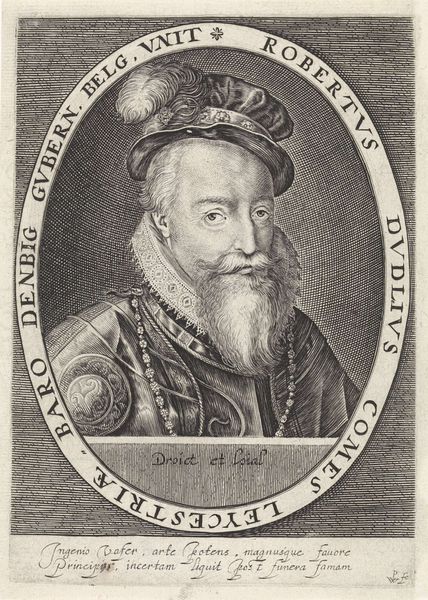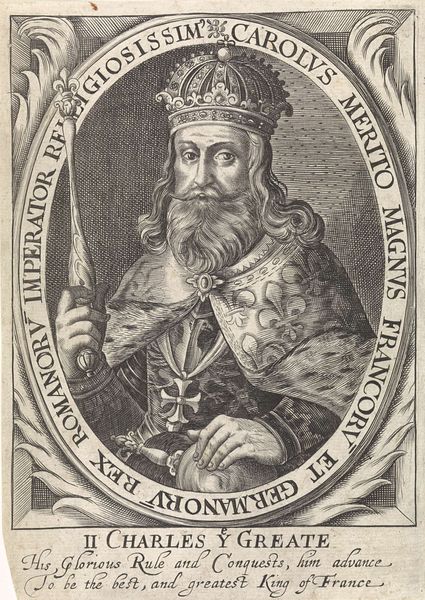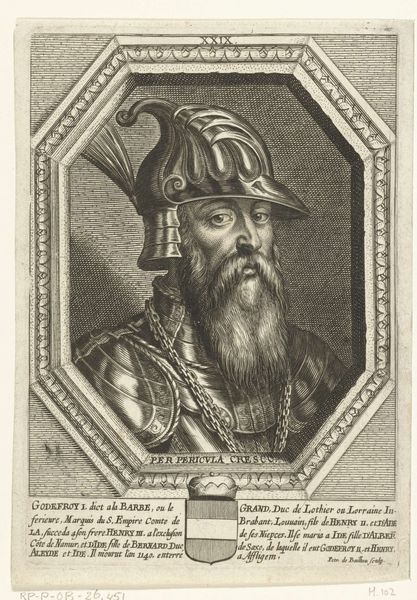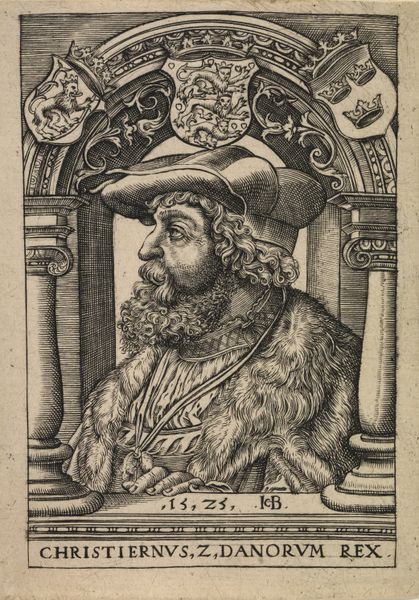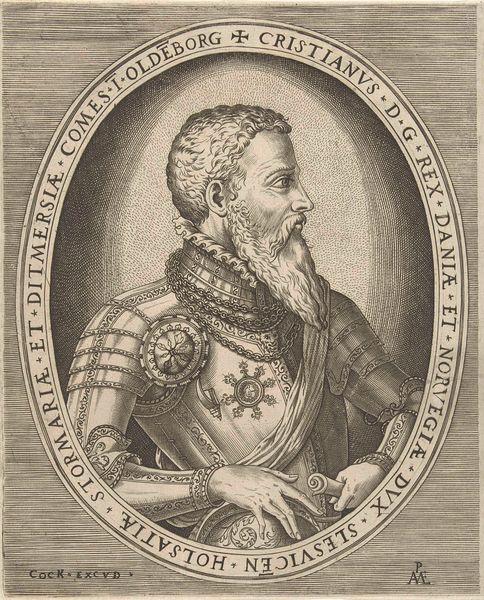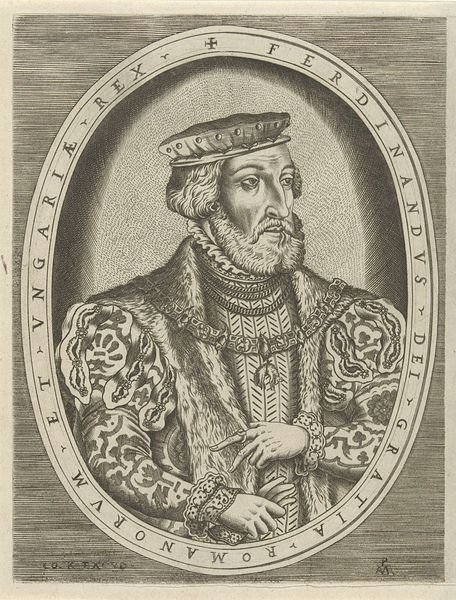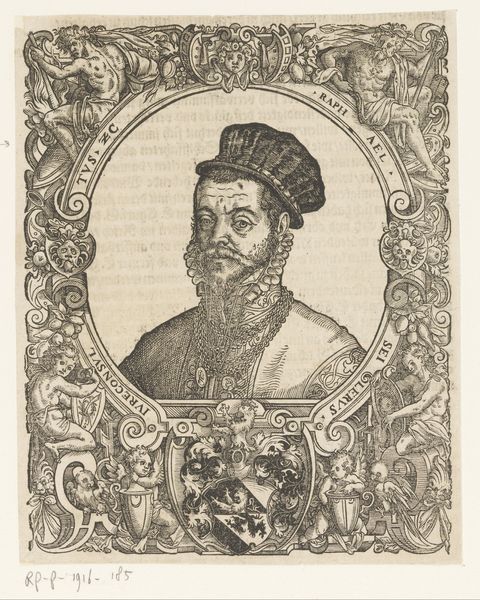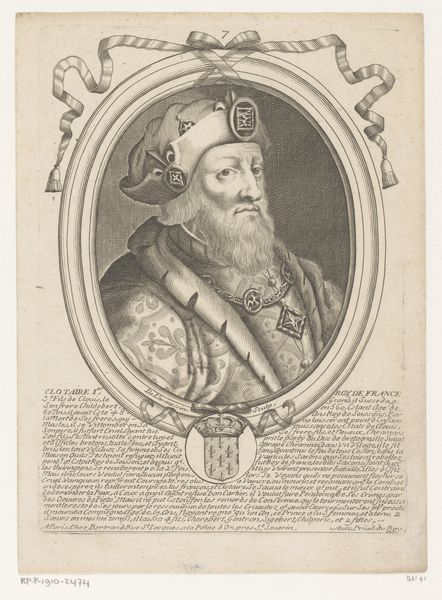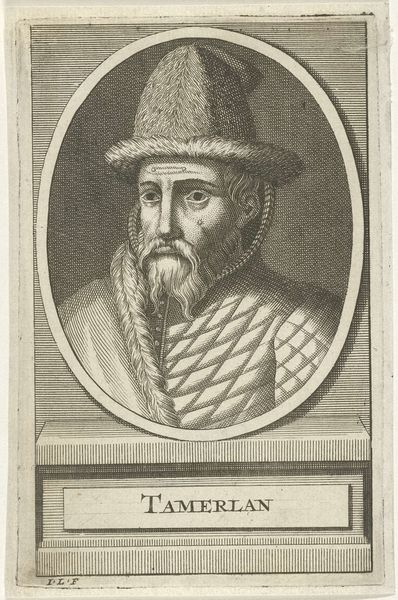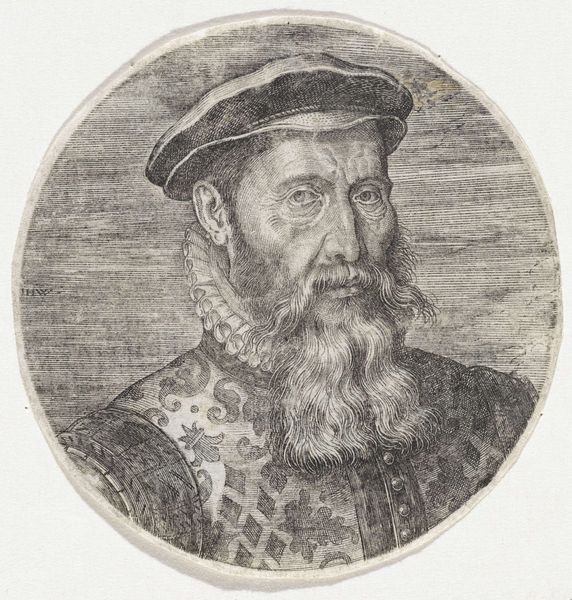
print, engraving
#
portrait
# print
#
old engraving style
#
caricature
#
portrait drawing
#
history-painting
#
northern-renaissance
#
academic-art
#
engraving
Dimensions: height 195 mm, width 151 mm
Copyright: Rijks Museum: Open Domain
This is Frans Huys's portrait of King Gustav I of Sweden, made around 1559. The image, rendered in meticulous lines, presents a formal depiction of royalty encased within an oval frame inscribed with text. Notice how Huys uses line and texture to convey a sense of power and authority. The intricate patterns of the King's garments and the detailed rendering of his beard create a dense visual field, characteristic of the 16th-century portraiture. The textures—fur, fabric, and metal—are carefully distinguished. The composition directs our gaze centrally, emphasizing the King’s face and hands, which hold a small object, possibly a symbol of his rule. The inscription around the portrait acts as a frame, reinforcing the subject’s identity. The use of Latin suggests a level of education and classical influence prevalent during the Renaissance. Ultimately, the portrait functions as a sign, communicating not just the likeness of a man, but also the complex network of power, status, and cultural values associated with kingship.
Comments
No comments
Be the first to comment and join the conversation on the ultimate creative platform.
